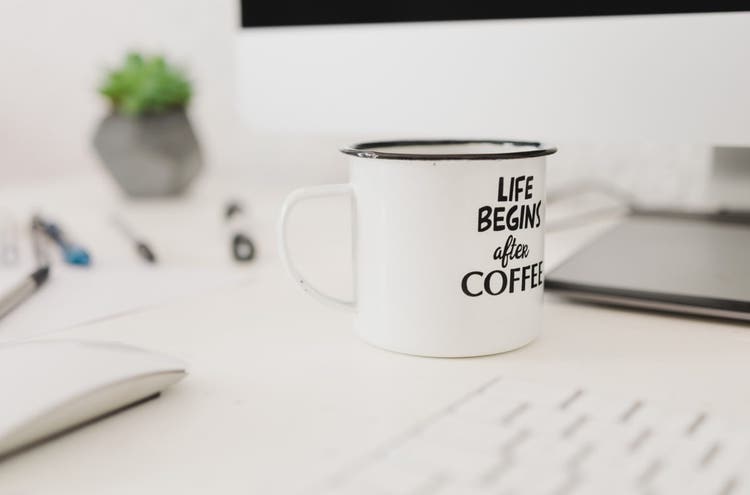News Flash: Coffee for Optimal Performance, Movement and Standing, and Self-Care to Avoid Burnout

Every week, we’re bringing you a roundup of the latest health and wellness news to hit the wire. This week, we highlight a new algorithm for coffee intake, the specific benefits to standing and exercise, and the proper self-care tools to avoid burnout.
Finding your ideal dose of coffee
The caffeine from that morning cup of joe is an invaluable productivity tool and brain booster for many of us—particularly after a bout of insomnia. But finding the right amount to achieve peak alertness without the nasty side effects such as nervousness, headaches and stomach upset has been a bit of a guessing game—until now.
A new study in the Journal of Sleep Research, led by Department of Defense researcher Jaques Reifman, determined an algorithm that uses people’s sleep cycles to make personal recommendations for the timing and amount of coffee consumption needed for maximum performance.
The software developed from this algorithm was so efficient, that by following its caffeine dosing schedule, people could reduce their consumption by 65 percent and still achieve the same level of performance. Moreover, researchers found that with timing, they could boost performance on a task by 64 percent using the same dose of caffeine as before.
The software is being tested on soldiers whose lives depend on their ability to stay awake and alert, but an older version of 2B-Alert on the web that helps develop sleep and caffeine schedules is available here, with the new optimization feature expected to be added by year’s end.
Why you need to stand and work out more each day
Desk jockeys take note: You need to stand and sweat to lower your risk of disease when spending long hours each day behind a computer.
Exercise and light movement such as standing have different physiological effects on the body, and each helps cancel out different risk factors for conditions such as heart disease and diabetes. New research is beginning to provide insight into what each one does for your health. Here’s what they found.
Researchers from Maastricht University in the Netherlands had 61 men and women undergo three different four-day sessions of certain exaggerated lifestyles. One session had them sitting for 14 hours a day with only bathroom breaks, and another had them substituting an hour of sitting time with moderate pedaling on a stationary bike for an hour. For the last session, they sat for eight hours a day but spent the other five or six hours of waking time standing or strolling at a casual pace. At the end of each four-day session, participants were given tests of cardiac and metabolic health.
The all-day sitters showed greater insulin resistance and undesirable changes in their insulin levels after just four days. They also had blood markers showing unhealthy changes to the endothelial cells, which line blood vessels, raising the risk of cardiac disease. Those cells were improved when bike riding was added to the mix, though insulin sensitivity and cholesterol were unchanged. However, after the four days of standing and strolling, those levels did improve, but endothelial cell health did not improve as it did during the cycling phase. The verdict? Moderate movement (such as cycling) and standing throughout the day are needed to reduce your risks from all that sitting.
Taking care of others without burning out
Whether you’re an overstressed parent of young kids, a caregiver for an aging parent or a health-care professional, you’re probably well aware of what burnout feels like. You’ve also probably heard that self-care is the answer. But what exactly is self-care? And what kind is most effective?
The science behind some of the most effective self-care strategies and how to practice them is discussed in this article in the University of California, Berkeley’s Greater Good magazine.
What works?
- Practicing self-compassion or treating yourself as kindly as you would a friend.
- Seeking social connections for emotional support or just a greater sense of belonging through meditation, yoga classes and walks in nature.
- Developing greater empathy and compassion through lovingkindness meditation or simply devoting more time with people engaged in active listening.
- Giving back through volunteering, spending money on others or engaging in simple acts of kindness.
Keeping your spirits up with movement, sleeping in and making time for fun activities like going to the movies or shopping are also important, researchers say, for the short bursts of happiness they provide.
Photo credit: Bruno Cervera, Unsplash